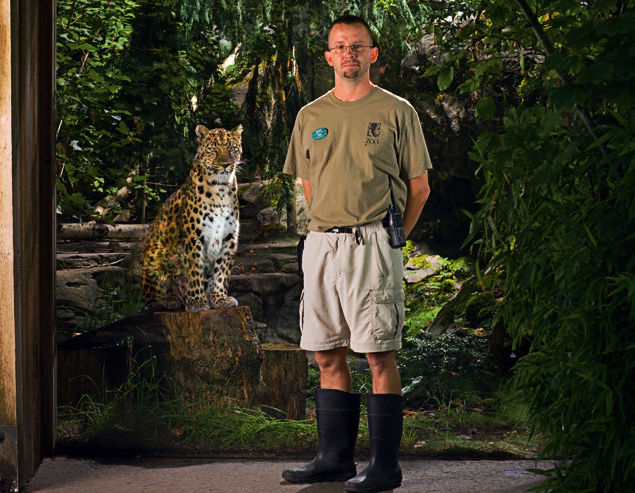The Trainer

Image: Daniel Root
BIG CATS are so appealing and charismatic. Whether or not you have food, they’re interested and happy to see you. I know it’s being anthropomorphic, but it feels like they are communicating with me through their vocalizations, which sound like their tongues rolling off the top of their mouths. When the tigers come into the den, I use that sound to have little conversations.
Compassion for the animals makes me a good zookeeper. Because they are in this captive situation, it is an absolute that I have to do the very best by them. Anything else is unacceptable. More and more I consider them members of my family. They are such attractive animals that the connection was instantaneous, but once I spent time with them, I learned their personalities and started creating a bond that has grown steadily. I just came back from a trip and was gone for a couple of weeks, and stepping back into the space and being close to those animals—it was a reestablishment of what a gift it is to be close to them every day.
Watching the cats get comfortable with the training we have been doing makes this job especially rewarding for me. Traditionally, if you wanted to take blood from a big cat, they had to be anesthetized. What we are doing now is training the cats to move into their small enclosures on their own and put their tail out of a small window in the enclosure. Then they back their butt up to the window so we have the full length of the tail and have access to a vein inside. Even though we only draw blood from the cats less than once a year, we have to practice the behavior multiple times a week to ensure it is bulletproof.
I agree with animal activists who say that big cats don’t belong in a zoo. They’re right; big cats belong in the wild. Tigers are an endangered species, but Amur leopards are critically endangered. There are probably only between 30 and 35 of the Amur leopard left in the wild. When the day comes that all of the animals in the wild are safe from being negatively impacted by humans, I think it would be safe to move away from things like zoos. But until that day comes, we need to continue to educate and inspire people and have the animals here as ambassadors to help us reach that goal of creating that bond with the visitor.
I recognize that I can always improve and I can always do better by the animals. Overall, I think that I have a great deal of patience with the animals and I respect these cats. I connect with them, but you will never find me on the other side of the mesh. There is a barrier between us for a reason. At the end of the day they ultimately look at me and say, "Where is my food?"




